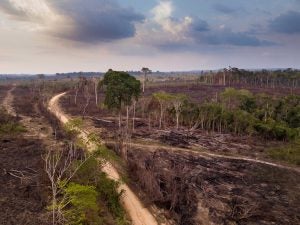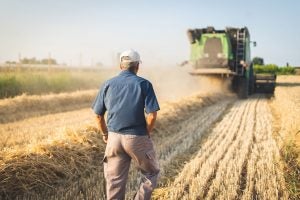There are three important lessons I still remember from elementary school: Don’t move in quicksand; stop, drop, and roll; and we must protect the rainforests. Fortunately, quicksand and fire safety haven’t turned out to be very relevant in my adult life. But the rainforest’s importance is increasingly relevant as time goes by.
So what exactly do rainforests provide? According to Rainforest Concern, a Britain-based charity, a lot. These forests are home to over 30 million animal and plant species — the most diverse on the planet. They also play an important role in managing the Earth’s climate and weather. Some estimates claim rainforests contain half of Earth’s water supply. In fact, water generated in the rainforests of Africa fall as rain in the Americans.
Just as my generation learned early in our education, we should take care to preserve rainforests around the globe. Unfortunately, humans aren’t doing a very good job of it. A study by the World Resources Institute’s Global Forest Watch and the University of Maryland found that 11.1 million hectares, or 27.5 million acres, were destroyed in 2021 alone. Most deforestation occurred by fire — both natural and intentionally set.

Considering the current focus on addressing climate change, you would think that this study’s alarming results would send shockwaves around the globe. We absolutely must do everything we can to reverse this trend and protect the rainforests. But it might surprise you to find out that this outcome is actually the foreseeable result of certain “sustainability” policies.
Meet the European Union’s Farm to Fork Strategy. Considered the EU’s Green New Deal, the strategy’s goal is to make the continent carbon neutral by 2050. The plan comes with lofty goals, including the reduction of pesticide use by 50 percent and of fertilizer use by 20 percent. It also calls for farmers to remove 10 percent of farmland out of production, and transition a quarter of fields to organic production.
» READ MORE: Europe’s Farm to Fork Strategy slams into the wall of reality
Farm to Fork’s goals all lead to one thing: lower food production. Based on its own analysis, the U.S. Department of Agriculture’s Economic Research Service believes the strategy will reduce European agricultural production between 7 and 12 percent. There’s no question cutting inputs decreases yields, as does organic agriculture.
But here’s the rub: Europeans still need to eat. Just because inputs are cut and farmland is taken out of production doesn’t mean the demand for food also falls. So where will that food come from? Other parts of the world, of course, including places where virgin rainforests are bulldozed over to make way for more farmland.

And that’s the grand irony of Farm to Fork: It’s just a sleight of hand. The EU isn’t actually going carbon neutral; it’s just exporting its carbon emissions to other parts of the world. Unfortunately, that likely means we’ll continue to lose rainforests, despite the fact that they play such a pivotal role in regulating Earth’s climate.
That’s one reason I’m so passionate about using science, technology, and innovation to make our current production methods more sustainable. Those tools are the reason we can feed more people using the same amount of land, we can reduce our use of pesticides and fertilizers, and how we continue to increase overall yields. These aren’t just magic tricks to make us feel like we’re making a difference; it’s real progress.
But as long as environmental activists continue to fight against productional advancements, we’ll see additional environmental degradation. It’s time to abandon those backward perspectives and start looking to a more sustainable future. Otherwise, we’ll eventually find ourselves in a time where we can only hope that quicksand and fire safety are our biggest concerns.
Amanda Zaluckyj blogs under the name The Farmer’s Daughter USA. Her goal is to promote farmers and tackle the misinformation swirling around the U.S. food industry.



